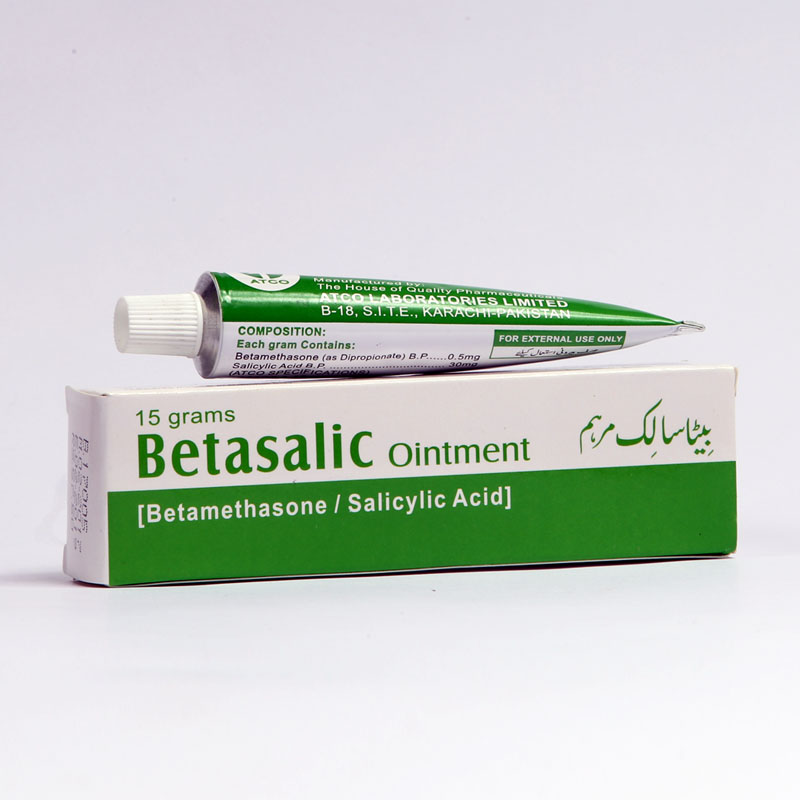Your cart is currently empty!
BETASALIC OINT
₨ 81
BETASALIC OINT: Betasalic ointment have. Betamethasone and Salicylic Acid. Its used to treat skin conditions like psoriasis and eczema by reducing inflammation and promoting the shedding of dead skin cells.
3 in stock
Description
Betasalic Ointment: A Comprehensive GuideIntroduction
Betasalic ointment is a topical medication that combines two active ingredients: Betamethasone and Salicylic Acid. It is commonly prescribed for the treatment of various skin conditions. Let’s delve into the details of Betasalic ointment and its therapeutic effects.
Active Ingredients
Betamethasone:
Betamethasone is a potent corticosteroid. It belongs to the glucocorticoid class and has anti-inflammatory properties.
When applied to the skin, Betamethasone reduces inflammation, itching, and redness associated with skin disorders.
It is particularly effective in conditions like psoriasis, eczema, and dermatitis.
Salicylic Acid:
Salicylic Acid is a keratolytic agent. It helps in the removal of dead skin cells.
By promoting the shedding of the outermost layer of the skin, Salicylic Acid helps unclog pores and prevent the formation of scales and plaques.
It is commonly used in the treatment of psoriasis, acne, and warts.
Indications
Betasalic ointment is indicated for the following skin conditions:
Psoriasis:
Psoriasis is a chronic autoimmune skin disorder characterized by red, scaly patches on the skin.
Betasalic ointment helps reduce inflammation and scaling in psoriatic lesions.
Eczema (Atopic Dermatitis):
Eczema is an inflammatory skin condition that causes itching, redness, and dryness.
Betasalic ointment provides relief from eczema symptoms by suppressing inflammation.
Other Dermatological Conditions:
Betasalic ointment may also be used for other skin conditions, such as lichen planus, seborrheic dermatitis, and contact dermatitis.
Usage and Precautions
Apply a thin layer of Betasalic ointment to the affected area(s) once or twice daily, as directed by your healthcare provider.
Avoid using it on broken or infected skin.
Long-term use should be under medical supervision to prevent side effects associated with corticosteroids.
Salicylic Acid may cause mild skin irritation; discontinue use if excessive redness or discomfort occurs.
Conclusion
Betasalic ointment is a valuable tool in managing various skin disorders. However, always consult your dermatologist before starting any new medication. They can guide you on proper usage, potential side effects, and individualized treatment plans.




